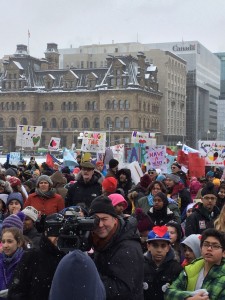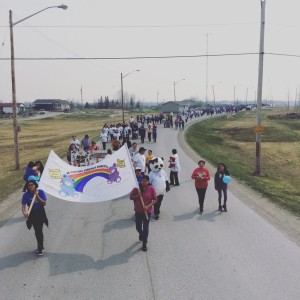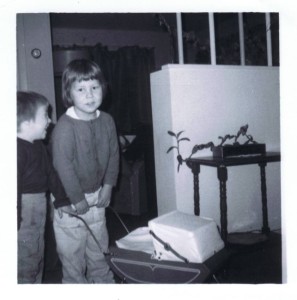
Caring Society vs Canada – foster care is modern day residential school for Indigenous people

On January 26th, the Human Rights Tribunal of Canada made a historic ruling for Indigenous peoples and children. In the decision called Caring Society vs Canada, it found that the Canadian government has been consciously discriminating against First Nations children who live on reserve by placing them into foster care at much higher rates than children who don’t live on reserves. It also found that the government has been underfunding children’s welfare services for First Nations communities. This has caused First Nations children to be separated from their families even when they were well-housed and loved. The ruling was made 9 years after a complaint was first brought forward by the Assembly of First Nations and the First Nations Child and Family Caring Society of Canada.
The decision is very important for a number of reasons. Most importantly, it links the foster care system to residential schools. Canada maintained residential schools across the country until 1996 when the last one was closed. Children were forcibly removed from their families, unable to speak their languages, and often treated abusively by the residential school teachers and priests. Some survivors of residential schools have spoken out about being starved or fed rotten food, being make to work rather than attend school, and suffering physical and sexual abuse. The Truth and Reconciliation Commission that started in 2008 and ended in 2015 was supposed to have addressed the traumatic and long-lasting effects of removing children from their families. But, the Human Rights Tribunal’s decision acknowledges that children are still being taken from their families and the problem is far from reconciled.

Second, the decision recognizes that apprehension of Indigenous children through foster care is still happening after the “Sixties Scoop.” The Sixties Scoop is what some people call the practice in the 1960s, 70s and 80s of taking First Nations children out of their homes and placing them in white families. During that time between 30-35% of children in care were Aboriginal. Adopting First Nations children out of their communities was a way of assimilating First Nations people into mainstream society and reducing the population on reserves. This weakened communities, nations, and political movements for sovereignty and land rights.
Third, the Human Rights Tribunal’s ruling also means that the government must commit better funding to child welfare services for Indigenous people. The main reason why children are still removed from their homes is that the government is consciously underfunding child and social services on reserves. This means that low-income families on reserves are being denied access to welfare. When supports for low-income families don’t exist or are spread too thin, children are apprehended and placed into foster care by social workers who claim that they are not being cared for.
However, many children in low-income First Nations reserve families are in loving communities. Just because they are low-income doesn’t mean that the children are better off living elsewhere. The Caring Society vs Canada decision is significant because it says that we can’t discriminate against First Nations people who are low-income or poor. The government must provide equal access to welfare and social services that every other Canadian can access.

Finally, the decision is a wakeup call to the government and the mainstream public in our era of so-called reconciliation. The Truth and Reconciliation Commission has helped many survivors gain strength and peace by recognizing the trauma that they suffered. This is very important. But the TRC has also helped some non-Indigenous Canadians to feel like the relationship between Canada and Native peoples has been fixed. In a 2013 report, it was found that 1 in 4 prisoners are Indigenous in Canada and that 1 of every 3 suicides in prison were Native prisoners. How can the government claim to have reconciled anything when, instead of using residential schools, they are using foster care and prisons to discipline Indigenous people into submission?
Caring Society vs Canada is an important legally-binding decision that has spoken directly to the Canadian government. Recently, the government announced that it would not seek an appeal of the decision and the new Liberal government stated they will be making changes to funding policies for child services on First Nations reserves. But this April the northern Ontario community of Attawapiskat declared a state of emergency after suicide attempts of 13 youth in one day. This is unfortunately only one example of Indigenous youth in crisis across Canada.
Attawapiskat youth and all Indigenous youth can’t wait. Let’s hope change is immediate.
